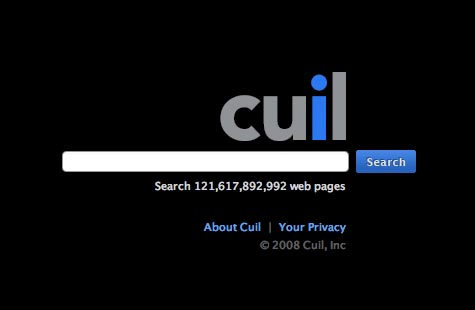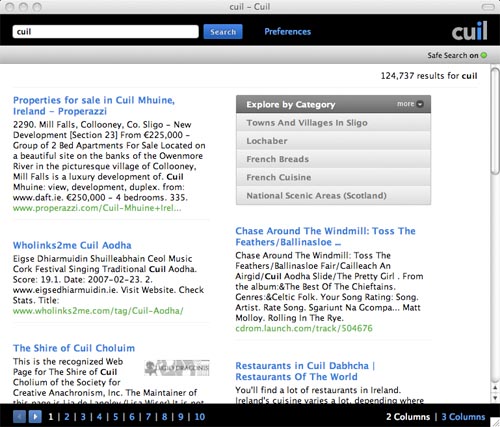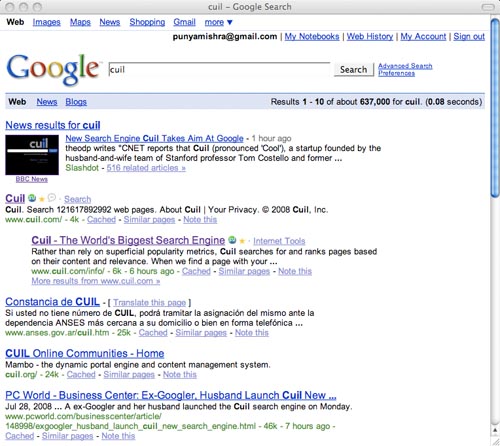I was just trying out Cuil the new search engine and came up with some strange results.
This is what the front page looks like, rather dark for my liking, but again they had to do something different from Google’s stark white front page.

if you click on the “About Cuil” or the “Your Privacy” buttons you get a “Page not found” error message. Oops!

[This has been fixed as I create this posting – which is why grabbing these screenshots was a good idea.
Most interesting, and actually if you are search engine user, most troubling is what you get if you search for the term “Cuil” itself.

Note that there is no mention of the search engine itself! Hmmm… a certain lack of self-awareness there, don’t you think.
In contrast, compare this to Google’s results for “Cuil”

Overall, a rather inauspicious start! I don’t think Google has much to worry about, at least not for the next few weeks!
On a final design note, I am most curious about the 2/3 column layout option – it may minimize scrolling but again it may take longer to scan the page…

0 Comments